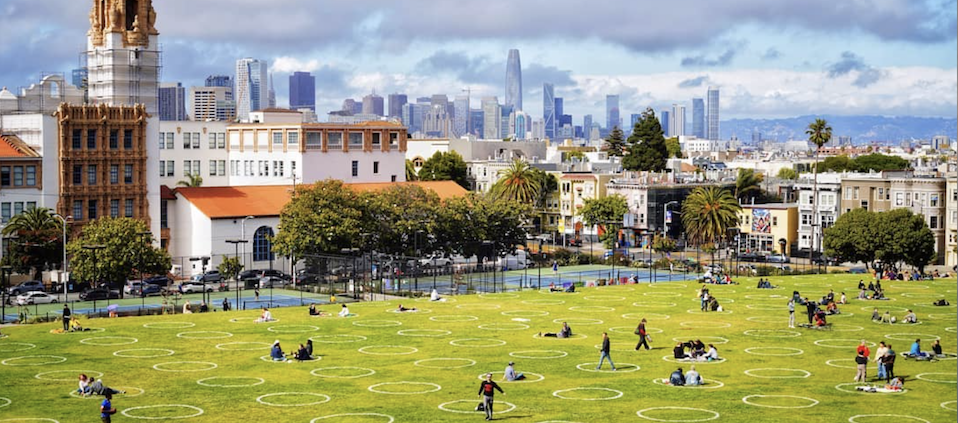San Francisco Expects $10.7 Billion In Lost Visitor Spending Until 2021
August 12, 2020
The global COVID-19 pandemic has brought a decade of record growth in tourism in San Francisco to an abrupt halt. For the first time in 10 years, the San Francisco Travel Association is forecasting a significant drop of visitor volume and spending for 2020.
San Francisco’s destination marketing organization is projecting a total of 12.9 million visitors to the city for 2020, down 53.1 percent from 26.2 million in 2019. Visitor volume is expected to recover to 18.4 million for 2021, still down 30 percent to 2019. Gradual improvement will be driven primarily by domestic visitation. International tourism will take much longer to recover.
Total spending by visitors is projected to reach $3.1 billion. This is down 67.4 percent from $9.6 billion in 2019. Visitor spend is expected to improve to $5.5 billion for 2021, growth of 76.7 percent to 2020 but down 42 percent to 2019.
Visitor growth for the entire region, including the Peninsula (San Francisco International Airport, San Mateo, Redwood City), the East Bay (Oakland, Berkeley, Hayward), Marin and coastal San Mateo County and wine country (Napa and Sonoma counties) is now expected to slow 52.4% in 2020 to an estimated 27.5 million tourists, down from 57.7 million last year. Forecast for 2021 reflects growth of 48.5 percent to 40.8 million visitors, a 29 percent reduction when compared to 2019.
Visitor spending for the region is projected to reach $6.5 billion, down 67.1 percent to 2019. 2021 is expected to grow 77.3 percent to $11.5 billion, still down 42 percent to 2019.
Citywide conventions business devastated
On the convention side, San Francisco Travel is anticipating a significant loss in business for 2020 and beyond. After a record 1.2 million definite convention room nights booked in 2019, the year 2020 will close on a mere 122,000 convention nights. To date 40 groups have canceled off the books between 2020 and 2021. Cancellations of citywide conventions alone represent a loss in direct spending of over $697.0 million.
The city has developed socially distanced protocols for future conventions, but San Francisco Travel does not anticipate normal operations to return until at least the latter part of next year and only if a vaccine is available.
International Visitation and Spending
San Francisco Travel reports that the city will welcome 969 thousand international visitors in 2020, a decrease of 67.2 percent over 2019. In 2021, international visitation is forecasted to grow 65.3 percent to 1.6 million, down 46 percent to 2019. International visitors are projected to spend $1.4 billion, down 72.4 percent from $5.1 billion in 2019 and growing to $2.5 billion in 2021, representing growth of 79 percent but still down 51 percent to 2019. Traditionally, the international markets have accounted for a much higher percentage of visitor spending. Since recovery will be driven mainly by domestic travel, visitor spending will take longer to recover.
International visitors should comprise 24 percent of visitors and 56 percent of all overnight visitor spending in 2020.
Overall, San Francisco expects 67 percent fewer international arrivals, with a drop from China of nearly 73 percent and 69 percent from Europe.
The top five international markets for visitor volume in 2020 are Mexico, China, United Kingdom, Canada and France. The top five international markets for visitor spending are China, United Kingdom, Australia, India and Germany. Moving forward, international recovery will be led by Mexico and Canada.
“The evolving coronavirus situation makes 2020 a difficult year to project. COVID-19 has affected every sector across the globe, and the hospitality industry is among the hardest hit. Our research suggests that recovery to pre-COVID-19 levels could take until 2025,” said Joe D’Alessandro, president and CEO of San Francisco Travel.
Still, there is reason for optimism. Jon Kimball, area general manager for Marriott International and current San Francisco Travel Board Chair, added, “If nothing else, this crisis has demonstrated the importance of connections and community. We’ve seen businesses working together, working with the City, and working across neighborhoods and even regions to find new ways to keep doors open, keep staff employed, and keep servicing customers.”









